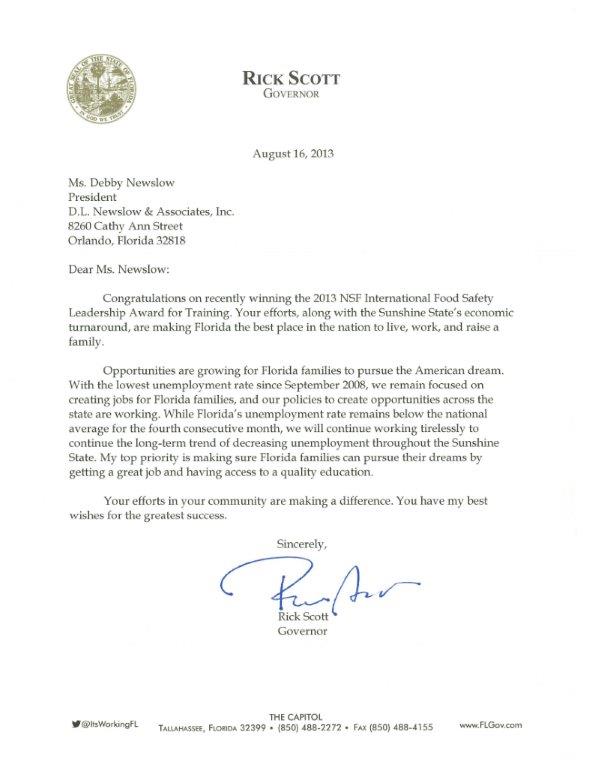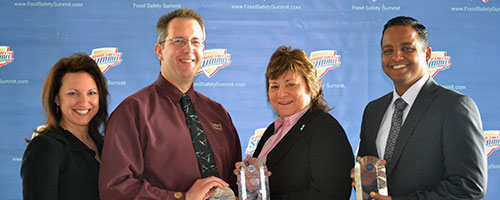Last month shortly after the release of her new book, “Food Safety Management Programs: Applications, Best Practices and Compliance,”Debby was interviewed by Sangita Viswanathan of Food Safety Tech. Read the interview with Debby below.
Food Safety Tech (FST): You have just published your new book, “Food Safety Management Programs: Applications, Best Practices and Compliance.” Can you tell us about the industry challenges that food safety and quality folks are facing today and that led you to write your new book?
Newslow: The world of food safety has become very complex. There are many different food safety standards, differing thoughts on what’s required for HACCP/HARPC programs, and the like. This book is designed to help clear up some of the confusion and help food safety and quality assurance professionals better understand how varying standards apply (or not) and how to develop a more efficient, value-added food safety program. As more and more companies are looking to re-vamp their food safety and quality programs, this book can be a good starting point.
FST: In your book you talk about how having an effective Food Safety Management System relates to the three-legged stool concept. At a high level, can you explain what that concept means?
Newslow: For a Food Safety Management System to be successful, an organization needs to have effective management review, corrective/preventive actions and internal audit programs. Consider these three attributes as three legs of a stool – when any one of those legs is weak it can cause the stool to topple. I have seen great food safety systems self-destruct quickly when one or more of the legs weaken. And, I have also seen dysfunctional systems become compliant and improve when these three programs are well defined and effective.
FST: In the book you say that ISO 9001 is really the foundation for many Food Safety Management Systems. Can you explain why that is, and what makes the ISO concept important?
Newslow: ISO 9001 is an international standard directed at the quality management process of an organization. For more than 20 years, we have been debating whether or not there’s a place for ISO standards in the food industry. We’ve debated about ISO’s cost, documentation requirements and other complexities. But the structure of an effective ISO 9001 management system provides a great model for discipline and continuous improvement. And many food and beverage companies that have implemented an effective ISO based system have seen value added advantages. It’s sometimes hard to put a dollar savings on something that didn’t happen – but we need to calculate these types of savings when considering the return on investment of an effective management system.
FST: You also talk a lot about becoming certified to a Global Food Safety Initiative or GFSI-benchmarked approved standard. Why should an organization pursue one of these?
Newslow: GFSI approved schemes are recognized worldwide as Food Safety Management Systems that meet widely accepted, defined criteria. Being approved to a GFSI scheme adds additional value in that having such as system enhances the entire food safety umbrella. This scheme requires intense prerequisite program (PRP) compliance to specific requirements along with additional structural requirements. There are practical reasons as well given that many companies will not work with suppliers who are not GFSI-certified. There are a variety of schemes to choose from including those that are specific for a food sector. It is up to the organization to evaluate these and conduct due diligence to determine which scheme is best for their organization.
FST: You talk extensively about the importance of management commitment. Given that it seems as though every scheme requires this, how does an organization demonstrate effective management commitment? Is this a measurable attribute?
Newslow: The requirement for management commitment dates back to the original Codex HACCP guideline stating that success of a HACCP Plan depended on the commitment of management. Through the evolution of the ISO 9001 standard, the stress on management commitment has evolved through the written requirements. Ensuring and demonstrating the involvement, commitment and effectiveness of top management on both the overall system – and in the individual process areas – is an absolute requirement of every system whether seeking certification to a third party standard or just having a successful business. Management commitment and the effectiveness of this commitment can be demonstrated through many means such as interviews with top management and associates representing all levels of the operation; the identified measureable objectives including attainment and status in meeting these goals and objectives; communication and change management programs; and more.
FST: What are some of the most frequent hurdles or issues leading to non-conformances related to management commitment?
Newslow: One of the most significant hurdles is for top management to understand that they must “walk the walk vs. simply talking the talk.” They must believe in the system and demonstrate this day after day. Schemes call for management to go beyond assigning tasks and budgets for food safety. Management has to ensure the adequacy of resources and set realistic, measureable goals that are tracked and addressed. Effective communication is also required, both internally and externally, to ensure the effectiveness and sustainability of any food safety system. Gaps in any of these areas can lead to non-conformances and system breakdown.
FST: What do you think the impact of the Food Safety Modernization Act (FSMA) is going to be on a company’s Food Safety Management System?
Newslow: No one has a crystal ball to know for certain what the impact of FSMA will be to the food industry – but I hope that it will be one more tool to ensure that companies deliver safe food. However, if an organization has a well-defined, implemented, well-maintained and sustainable food safety and quality management system, they will either be very close to compliance or have the foundation to implement any additional programs effectively without needing to reengineer the entire system. No matter which standard is chosen, ensuring its effectiveness to the operation overall is critical. Using this foundation to promote continuous improvement and sustainability provides every system the basis for compliance to new laws, new concerns or whatever may develop in our industry.
FST: Debby given the many food safety standards available to us – and in light of the ever-changing world of food safety – tell us how such a book addresses the “moving target of food safety standards” and remains current?
Newslow: This can be a tough one. Just in the time that this text went to press, several of the standards referenced were revised – some more than once. However, the content of the book, including the focus on ISO 9001, provides tools that can be applied no matter which standard and which version is chosen. The key is to monitor the websites and literature related to the standard of choice and ensure that changes or revisions are understood and implemented effectively in a compliant manner based on the needs of the organization.


